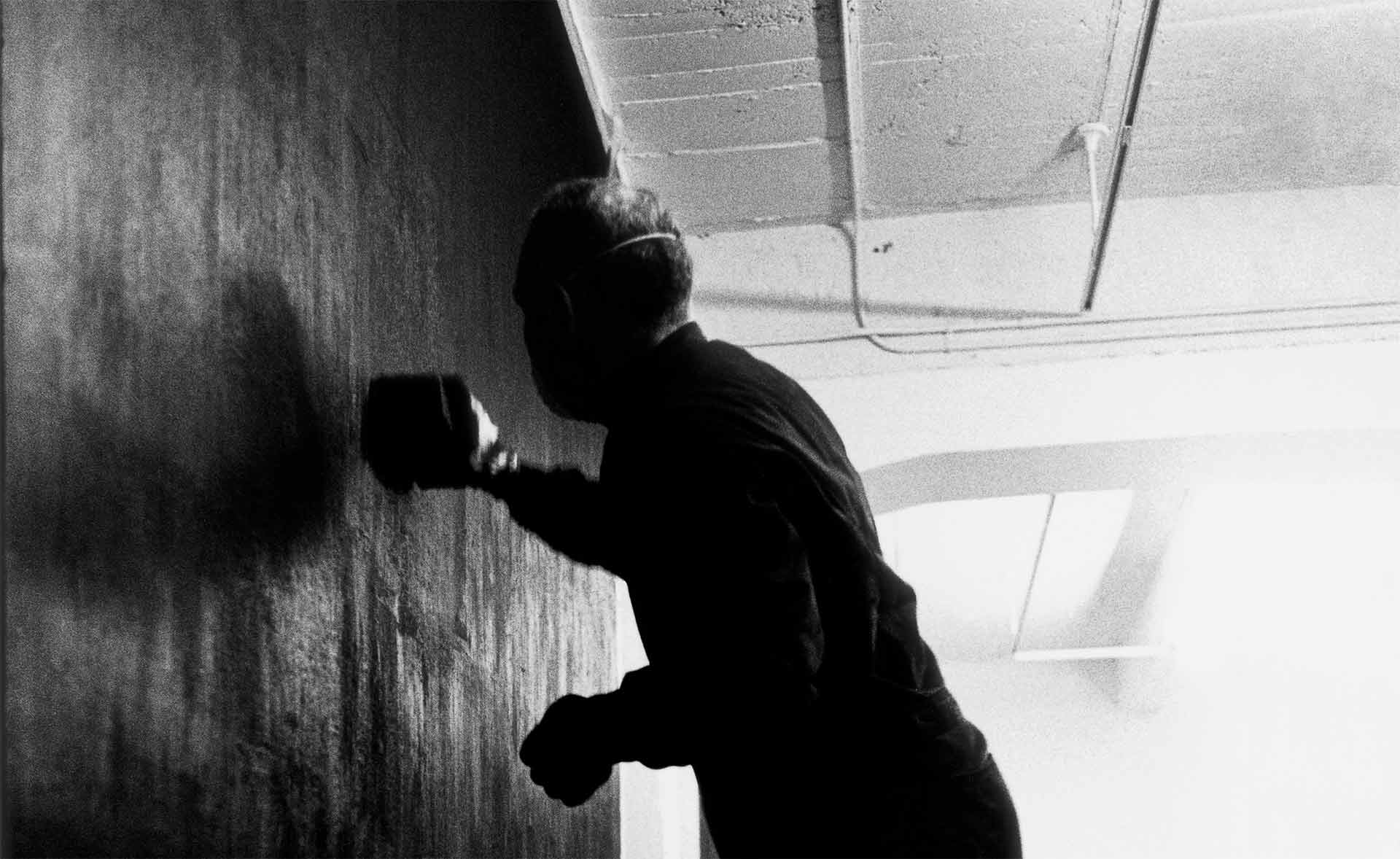
Before he began the monumental sculptures that have won him international renown, Richard Serra (b. 1938, San Francisco) had already worked on drawing, and he has continued to do so throughout his career. His drawing and graphic production address questions that are also central to his sculpture, such as the importance of the material, the artistic process, the record of time, and altered perception.
During a trip to Japan in 1970, Serra had an opportunity to stroll through the zen gardens of the Ryoanji temple in Kyoto. He found there that instead of focusing the attention on specific features of the landscape, it was conceived as a total field whose design took into account factors that affect the way it is contemplated, such as time, movement, and meditation, central concerns in Serra’s oeuvre from then on.
EXPERIMENTATION WITH MATERIAL
Richard Serra assigns a key role to the creative process, in the course of which the techniques and materials employed determine the result.
Japanese Kozo Paper
For his drawings or engravings, Serra chooses high grammage handmade Japanese papers, generally of kozo (a type of mulberry tree), habitually used in the Far East and manufactured according to traditional techniques. There are other types of paper in Japan processed with vegetable fibers, such as gampi and mitsumata, but kozo is the most resistant of the three.
By means of a laborious process, kozo bark is softened in order to obtain long fibers that are turned into pulp and then dissolved in water. The pulp is next passed through a mould of thin bamboo strips sewn together.
The sheets are then pressed gently to drain off the excess water, separated, and left to dry in the sun on a flat surface.
From the Oil Stick to Creating Materials
Over the years, Serra has developed various drawing processes characterized by the exclusive use of black, which he views more as matter than as a color. Visually, black is heavy, creates dense volumes, and absorbs and dissipates the light.
In the mid-1970s, his increasingly large Installation Drawings led Serra to create a very personal new tool. By melting several oil sticks and pouring them into rectangular moulds, he formed blocks of oil. This technique demands the use of both hands for drawing and a greater effort from the whole body.
Serra also melts oil sticks to create his Solids (2008), but his aim here is to obtain an almost liquid texture that he pours onto a solid surface (a table or the floor). He places the paper over this layer of liquid paint and presses down on it to create different textures.
Finally, in his Ramble Drawings (2015), shown in this exhibition, Serra reduces the scale of his drawings, which become lighter and more intimate. The material, which can include different types of black (oil stick, lithographic wax, pastel, graphite powder, engraver’s ink, silica, etc.), is spread on a table. He covers the pigments with a sheet of high grammage paper and firmly presses the surface with a piece of steel.
